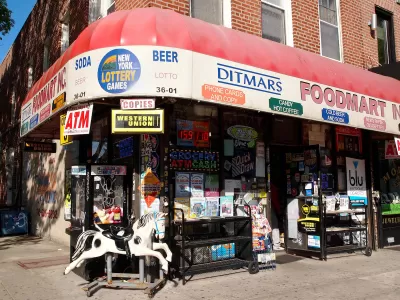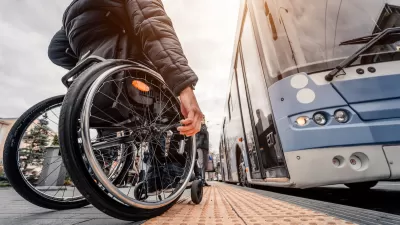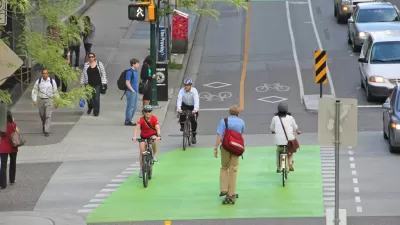A popular walkability assessment omits key factors that impact different demographics and can direct development resources to already wealthy neighborhoods.

A new paper from University of Illinois Chicago and University of California, Berkeley researchers throws into question the well-known ‘Walk Score,’ pointing out that “Windy City census tracts that were rated most highly by the popular real estate algorithm mapped almost exactly onto the census tracts with the highest share of white residents — and a literature review suggested that the same thing is likely true in other dense urban areas.”
Kea Wilson outlines the paper’s findings in Streetsblog USA., noting that researchers Kate Lowe and Anna Brand attribute this in part to the fact that the Walk Score scoring system omits significant factors such as pedestrian crash rates and pedestrian infrastructure, as well as what percentage of people actually walk instead of driving. “And it certainly doesn't get at how notions of ‘walkability’ might vary between different groups, like whether a resident can actually afford the boutique or shop at the non-halal grocery store on the corner, whether their kids get bussed to the school across town rather than the one down the block, and whether they're subjected to jaywalking laws that disproportionately target people of color practically every time they step foot into heavily-policed neighborhood.”
According to the researchers, ignoring these nuances skews results towards neighborhoods that already have desirable amenities and outright ignores some types of businesses. “Moreover, Lowe and Brand say that Walk Score tends to give even more points specifically to areas with a lot of restaurants, bars, shopping, coffee shops, and other ‘spaces of consumption’; places of worship, though, aren't included at all, and corner stores may not merit extra points, even though the researchers point out that they ‘can be important food sources in some low-income communities.’”
Calling the Walk Score tool a “self-fulfilling prophecy,” the researchers caution that “A market urbanism that suggests universal provision of walkable neighborhoods will fix inequities doesn't reflect the structural forces [in our cities] — and WalkScore, in particular, is about investment flows.”
FULL STORY: Is ‘Walk Score’ Really Just a ‘White Score’?

Study: Maui’s Plan to Convert Vacation Rentals to Long-Term Housing Could Cause Nearly $1 Billion Economic Loss
The plan would reduce visitor accommodation by 25,% resulting in 1,900 jobs lost.

North Texas Transit Leaders Tout Benefits of TOD for Growing Region
At a summit focused on transit-oriented development, policymakers discussed how North Texas’ expanded light rail system can serve as a tool for economic growth.

Why Should We Subsidize Public Transportation?
Many public transit agencies face financial stress due to rising costs, declining fare revenue, and declining subsidies. Transit advocates must provide a strong business case for increasing public transit funding.

How to Make US Trains Faster
Changes to boarding platforms and a switch to electric trains could improve U.S. passenger rail service without the added cost of high-speed rail.

Columbia’s Revitalized ‘Loop’ Is a Hub for Local Entrepreneurs
A focus on small businesses is helping a commercial corridor in Columbia, Missouri thrive.

Invasive Insect Threatens Minnesota’s Ash Forests
The Emerald Ash Borer is a rapidly spreading invasive pest threatening Minnesota’s ash trees, and homeowners are encouraged to plant diverse replacement species, avoid moving ash firewood, and monitor for signs of infestation.
Urban Design for Planners 1: Software Tools
This six-course series explores essential urban design concepts using open source software and equips planners with the tools they need to participate fully in the urban design process.
Planning for Universal Design
Learn the tools for implementing Universal Design in planning regulations.
City of Santa Clarita
Ascent Environmental
Institute for Housing and Urban Development Studies (IHS)
City of Grandview
Harvard GSD Executive Education
Toledo-Lucas County Plan Commissions
Salt Lake City
NYU Wagner Graduate School of Public Service




























